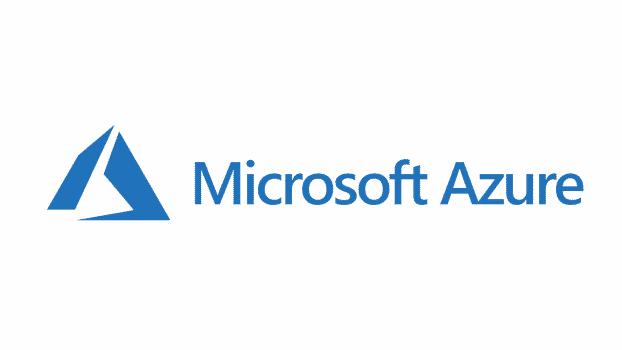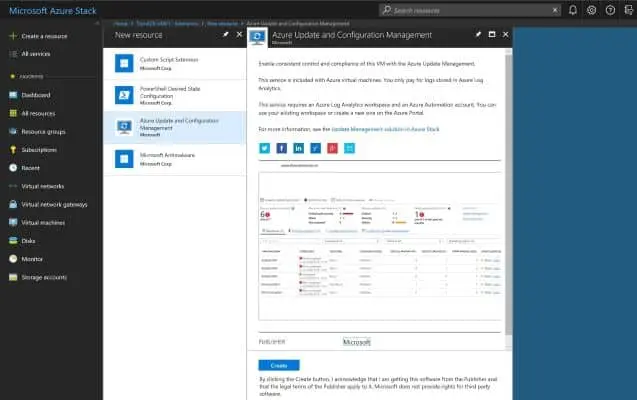Microsoft has been putting a lot of work into their Microsoft Azure public cloud architecture. If you have heard about Azure, but aren’t sure if you should get it. Don’t worry, we got your back, here is a review of Microsoft Azure.
What you will see?
Microsoft Azure

Microsoft Azure is a unified set of cloud platforms for developing, operating, and supporting apps and services. It offers you hosting, backup, cloud computing, application development, e-commerce, monitoring, data analysis, and other services. A Content Delivery Network (CDN) is also part of Microsoft Azure. However, this isn’t completely dependent on Microsoft’s own edge servers. It also includes three CDN-based plans. They are Standard Akamai, Standard Verizon, and Premium Verizon. Azure’s integration with Microsoft technology is one of its biggest advantages. You can use it in conjunction with Azure storage, web apps, and media services. The CDN can be administered using PowerShell or .NET, as well as a REST API and Node.js. This is a significant bonus for many developers and sysadmins.
Subscriptions
Azure’s Standard subscription consists of custom domain name support, HTTPS support, HTTP/2, geo-filtering, load balancing, and DDoS protection. Asset pre-loading is a less-common Standard Verizon feature. It allows you to specify which items should be cached before they’re retrieved. Each region’s first request receives the file immediately. They don’t have to wait for it to be fetched from the origin. The Premium Verizon subscription adds real-time metrics and alerts. It also adds comprehensive HTTP reporting, token authentication (hotlink prevention). It even has a more powerful rules engine for changing cache or header settings, redirecting URLs, and generally messing with content delivery. Although some of these are conventional on other CDNs, Microsoft’s implementation is outstanding.
The CDN’s capabilities, even basic information isn’t readily available on their site. Microsoft’s own data (118 PoPs across 100 cities) are only present on the Locations page for the Akamai plan. Additionally, the company recommends you disregard them and try each of the plans to find which works best. If you want Azure, you can start with the official CDN Comparison page. There you may examine the various capabilities and click on the links for more information.
Pros
- Stacks of features
- Strong integration with Microsoft services
- Choice of CDN networks
- $200 free credit for signing up
Cons
- Below average performance
- Can be a little expensive
- Complex setup and management
- Tech support costs extra
Price and Plans
Microsoft Azure CDN is a pay-as-you-go service. So, you only pay for the bandwidth you utilise. Moreover, data transfer fees vary depending on the area similar to other CDNs. The Standard Akamai and Standard Verizon plans start at $0.081 per GB for North America, Europe, the Middle East, and Africa. Whereas for South America it costs $0.233. After the first 10TB, rates decline. It declines according to how much you use. If you use 150TB per month in North America, the last 100TB costs $0.056 per GB.
Plans
For the first 10TB of traffic, the Premium Verizon plan costs almost twice as much ($0.158 to $0.466 per GB). It includes savings if you use more. Even the Standard plans can cost twice as much as competitors. They are, however, less expensive than many high-end enterprise CDNs. Moreover, their integration with Microsoft technologies may make this a worthwhile investment for some. The Azure site includes a Pricing Calculator. This can help you figure out your monthly bill. It will help if you’d want to get a sense of your costs. To get this, simply select a plan and enter a traffic estimate for each region. It will show the total on the screen immediately.
Remember that tech support starts at $29 per month for trial use. This goes up to $100 for small or medium-sized businesses with low business-critical reliance on Azure. If that’s too much for you, there’s a massive and extremely extensive digital knowledgebase. You can access it for free. Sign up for Azure instead, and you’ll earn a $200 free credit after 30 days of use. This might provide you with more than 1500GB of traffic. This is more than enough to test even the largest of sites. Also, it doesn’t automatically renew as a paid product. So, there is no risk.
Setup

The Azure online dashboard is not easy to navigate with a lot of features. So, even the most experienced user could have trouble navigating it at first. The left-hand sidebar includes 23 different sections. This includes Function Apps, SQL Databases, Load Balancers, and Virtual Machines. Each of these leads to a separate administrative panel with even more possibilities. You can find the proper location by typing ‘CDN’ into the Search box. In our first attempt to construct a CDN profile, we got an erroneous message. It showed “Please confirm that Microsoft.CDN is listed as a registered Resource Provider in your Azure membership,” with no link to further explain the problem.
However, after some experimentation, the system begins to make sense. You can add several zones to a CDN profile, after creating it. You can specify their kind (Storage, Cloud Service, Web App, and more) as well as their URL. Each can also have a CDN domain with a sensible name. With Akamai’s Dynamic Site Optimization function, speed is improved through route and TCP improvements, object prefetch and mobile image compression. With costs starting at $0.19, this isn’t inexpensive, but with $200 in free credit, you can at least try before you buy.
Configuration

Azure functions similarly to any other CDN after setting up. You can edit your code to use the “mytestdomain.azureedge.net” CDN URL with assets you’d like to cache. Or you can use a CNAME record to use a custom domain name. After that, the system will load them on the first request. Then it will begin serving them to visitors. You can then examine Azure’s CDN settings by accessing an Endpoint. These are also quite adaptable, far more than many of the competitors. To turn compression on and off, along with clicking a button, specify the MIME types you want for optimization. It’s also simple to control how the service handles query strings in URLs. You can opt to skip caching for queries, cache the initial request and serve that asset always, or treat each request as a separate URL.
Geo- Filtering
Geo-filtering is well-managed, and there is no need to learn to code or write scripts. Instead, you can designate individual files or folders. Then you can allow or ban access to them from the countries of your choice. When you’ve gathered enough information, Azure offers a variety of reports and analytics to assist you to figure everything out. Other technologies’ user interfaces don’t often provide much help in figuring out how to use them. You’ll also come across Azure’s administration capabilities. These features are really strong.
To delegate CDN management to others in your company, you can create users, groups, and roles, and determine exactly who can do what. You can do this by using the extensive Access Control system. Although, this would be a difficult task. There is a wealth of documentation available, and you will ultimately learn the fundamentals. However, be aware that it may take some time.
Performance
There is no way to be sure if Azure CDN is capable of delivering the speed you require. This is because there are many factors to consider. This includes your visitors’ locations, the Azure plan you’re using, the quantity and types of files, the web applications, and whether you’re using Azure’s Dynamic Site Optimization. By measuring CDN response times experienced by real users around the world, CDNPerf provides a starting point. It’s a single number that can’t give a final answer. However, it gives you a good idea of how the edge servers compare. Although CDNs can perform significantly better (or worse) in specific regions or continents. Azure CDN is impressive almost everywhere. If Azure’s feature set is a perfect match for your project, it can be a viable option.
How does Microsoft Azure work?
If you subscribe to Azure, you get access to all of the services available through the Azure interface. These services allow you to create cloud-based resources such as virtual machines (VMs) and databases. A number of third-party manufacturers make software directly available through Azure. This also includes in addition to the features provided by Microsoft through the Azure portal. Third-party application costs vary greatly. However, that may include a subscription price for the application. It also includes a user fee for the infrastructure needed to host it. Azure comes with five different customer support solutions from Microsoft:
- Basic
- Developer
- Standard
- Professional Direct
- Premier
The scope and cost of these customer assistance programmes vary. All Azure accounts get basic assistance for free. Although, Microsoft charges a premium for the other support options. Developer support is $29 per month. It costs $100 per month for Standard assistance and $1000 per month for Professional Direct support. Microsoft does not provide pricing information for Premier support.
What can you use it for?
Microsoft Azure has a wide range of applications due to its multiple service offerings. One of the most common uses for Microsoft Azure is to run virtual machines or containers in the cloud. Infrastructure components such as domain name system (DNS) servers, Windows Server services such as Internet Information Services (IIS) and third-party applications can all be hosted on these computational resources. Third-party operating systems, such as Linux, are also supported by Microsoft. Azure is also frequently utilised as a cloud database hosting platform. Serverless relational databases are available from Microsoft. This includes both Azure SQL, and non-relational databases such as NoSQL. Furthermore, it is frequently used for disaster recovery and backup. Many businesses use Azure storage as an archive to suit their long-term Data retention requirements.
Azure products and services
- Compute– Use it to deploy and manage virtual machines, containers, batch tasks, and access distant applications. Depending on whether the resource needs to be available to the outside world, compute resources established in the Azure cloud. It can be configured with either public or private IP addresses.
- Mobile– Assist developers in creating cloud apps for mobile devices. Providing notification services, back-end task support, API development tools. Provides the ability to combine geospatial context with data.
- Web– This help with web application development and deployment. It also includes search, content delivery, API administration, alerting, and reporting.
- Storage– Scalable cloud storage for structured and unstructured data. Big data projects, persistent storage, and archive storage are also supported.
- Analytics– Real-time analytics, big data analytics, data lakes, machine learning (ML). Also, business intelligence (BI), internet of things (IoT) data streams, and data warehousing. Features for real-time analytics, big data analytics, data lakes, machine learning (ML). Also, includes business intelligence (BI), internet of things (IoT) data streams, and data warehousing.
- Networking– Virtual networks, dedicated connections, and gateways, traffic management and diagnostics. Also, load balancing, DNS hosting, and network protection against distributed denial-of-service (DDoS) assaults.
- Media and content delivery network (CDN)– On-demand streaming, digital rights protection, encoding, and media playing and indexing.
- Integration– Services for backing up servers, recovering websites, and connecting private and public networks.
- Identity– Help to protect encryption keys and other sensitive data in the cloud. It does so by allowing only authorised users to access Azure services. Support for Azure Active Directory and multifactor authentication are also available.
- Internet of things– To collect, monitor, and analyse IoT data from sensors and other devices. Notifications, analytics, monitoring, and coding and execution help are all included.
- Mixed reality– Intended to aid content creators for the Windows Mixed Reality environment.
Services
- DevOps– Offers project and collaboration solutions, including as Azure DevOps. To help with DevOps software development. Application diagnostics, DevOps tool integrations. Test laboratories for build tests and experimentation are also present.
- Development– Make it easier for app developers to share code, test apps, and identify any bugs. JavaScript, Python, .NET, and Node.js are supported by Azure. Support for Azure DevOps, software development kits (SDKs), and blockchain are also present.
- Security– Let you detect and respond to cloud security risks, manage encryption keys and other sensitive assets.
- Artificial intelligence (AI) and machine learning– Employ a variety of services to incorporate artificial intelligence, machine learning, and cognitive computing capabilities into applications and data sets.
- Containers– Assist businesses in creating, registering, orchestrating, and managing large quantities of containers in the Azure cloud. It utilises standard platforms like Docker and Kubernetes.
- Databases– Database as a Service (DBaaS) for SQL and NoSQL. Other database instances like Azure Cosmos DB and Azure Database for PostgreSQL. The platform’s main database service is Azure SQL. It’s a relational database that has SQL capability without requiring the installation of a SQL server.
- Migration– Assists organisations in estimating workload migration costs. Even assists in executing workload migrations from local data centres to the Azure cloud.
- Management and governance– Offer a variety of backup, recovery, compliance, automation, scheduling, and monitoring capabilities to aid in the management of an Azure infrastructure.
- Blockchain– Join a blockchain consortium or start your own with the Azure Blockchain Service.
- Intune– Microsoft Intune to enrol user devices, allowing security policies and mobile apps to be pushed to those devices. Mobile apps can be distributed to groups of people or to a set of devices. It can keep track of which apps are used.
Azure for DR and backup
Azure is used by certain businesses for data backup and disaster recovery. You can use Azure as a replacement for a company’s own data centre. Instead of investing in local servers and storage, some businesses opt to operate some or all of their business apps on Azure. Microsoft has Azure data centres all over the world to ensure availability. The services are available in 55 regions across 140 countries. Regrettably, not all services are accessible in every location. As a result, Azure users must ensure that the locations where their workloads and data are stored conform with all current compliance standards and applicable legislation.
Privacy
Privacy is a big worry for cloud customers due to data security issues and regulatory compliance requirements. Microsoft has launched the online Trust Center to address these concerns. It does so by providing thorough information on the company’s security, privacy, and compliance initiatives. Microsoft will only use customer data if it is necessary to provide the agreed-upon services. Moreover, it will never divulge customer data to government agencies unless it is required by law.
Conclusion
Azure’s integration with Microsoft technology is one of its biggest advantages. If you are be using other Azure services or benefit from the.NET or PowerShell management features, Azure CDN is a must-see. However, less demanding users may be better off looking elsewhere due to its complexity and cost. When it comes to migrating infrastructure to the cloud, organisations that have standardised on Windows Server can benefit from Microsoft Azure. Moreover, Azure is friendly to alternative operating systems, particularly Linux, and offers a growing set of supplementary services. The Trust Center from Microsoft can address all the privacy issues. Also, businesses can use Azure for data backup and disaster recovery by some businesses.
If you have any doubts, you can ask in the comments section below.
















